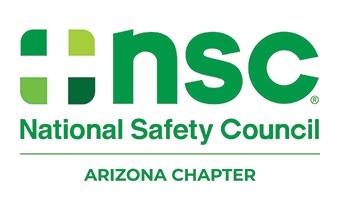 The holiday season brings celebration, travel, and longer to-do lists. It also brings a hidden danger to America’s roads: drowsy driving. Between late nights, early flights, and long hours at work, fatigue becomes a serious safety concern. This is especially true for employees traveling between job sites or heading home after extended shifts. Employers play a vital role in helping workers stay safe behind the wheel, both on and off the clock.
The holiday season brings celebration, travel, and longer to-do lists. It also brings a hidden danger to America’s roads: drowsy driving. Between late nights, early flights, and long hours at work, fatigue becomes a serious safety concern. This is especially true for employees traveling between job sites or heading home after extended shifts. Employers play a vital role in helping workers stay safe behind the wheel, both on and off the clock.
Drowsy Driving Is Impaired Driving
According to the National Safety Council, driving on four to five hours of sleep makes a person four times more likely to crash. That’s the same crash risk as driving with a blood alcohol level of 0.08. Losing even two hours of sleep from a normal eight-hour night impairs alertness and reaction time. Fatigue affects judgment and coordination, slows decision-making, and increases the chance of missing road hazards.
Each year, drowsy driving contributes to thousands of preventable crashes, injuries, and deaths. The risks rise during the holidays, when long-distance travel, seasonal work demands, and family obligations reduce rest and recovery time. For many employees, disrupted sleep schedules and irregular work hours are the norm, not the exception.
Why It Happens
The leading causes of drowsy driving are well-known: lack of sleep, extended waking hours, and working outside natural sleep cycles. The body is programmed to rest during nighttime hours. When work schedules or travel plans push activity into early mornings or late nights, the body’s circadian rhythm fights back with fatigue. Even short bouts of “microsleep” — nodding off for three seconds — can be deadly at highway speeds, sending a vehicle the length of a football field without control.
How Employers Can Help
Building a safety culture that addresses fatigue needs consistent policies and education. Employers can take several steps to protect their workforce and reinforce safe driving behavior year-round:
- Promote rest as a safety priority. Encourage employees to get seven to nine hours of sleep and avoid driving if they have been awake for 16 hours or longer. Make it clear that arriving safely is more important than arriving on time.
- Review scheduling practices. Limit extended shifts and consecutive night work during peak seasons. Allow recovery time between shifts and discourage employees from driving immediately after long or overnight work periods.
- Offer fatigue management training. Provide short safety talks or toolbox sessions about the signs of drowsiness, including frequent yawning, drifting out of lanes, missing exits, or trouble focusing, and what to do if they occur.
- Create a reporting culture. Encourage employees to speak up if they feel fatigued or unsafe to drive, without fear of discipline. Supervisors should be trained to recognize fatigue and adjust duties when needed.
- Support safe commuting and travel. Offer alternatives such as carpooling, rest breaks, or overnight stays when travel distances or holiday events extend beyond normal working hours.
- Model the message. Leaders should demonstrate safe behaviors including getting adequate rest, taking breaks, and avoiding late-night drives after long workdays.
Keeping the Season (and Your Employees) Safe
The holidays are a time to celebrate accomplishments and reconnect with family and friends, but safety should never take a break. Employers who recognize the link between fatigue and driving risk can make a real difference in keeping their employees and communities safe.
